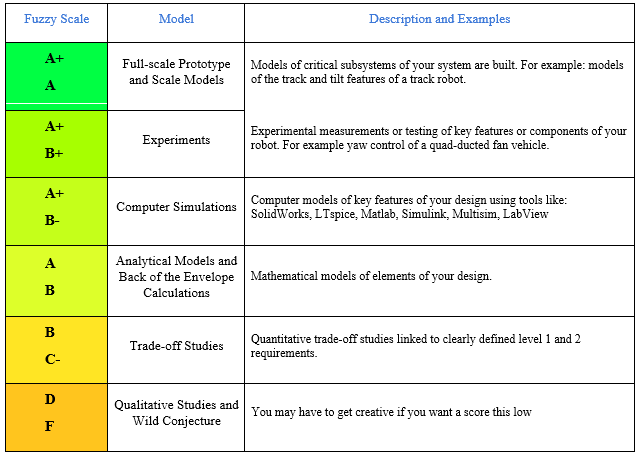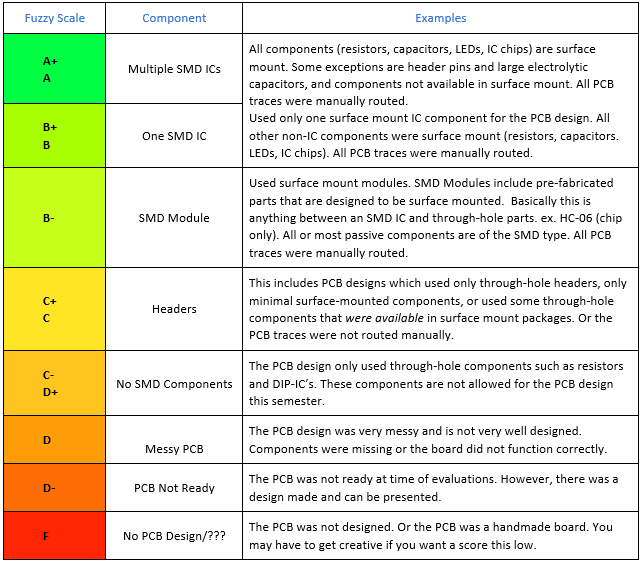#9: Critical Design Review (CDR)
News and Announcements
Old Business
New Business
Assignment Due Dates
PDR Generic Comments
- Use material from previous semesters with extreme caution. Recommended that you do your own work and then check against previous work. Too much “incorrect” material taken from previous semesters.
- Division Management
- Division managers need to help and review work product of division members.
- Division Managers are reasonable for material covered by Division Members
- Division Manager grade may be based on Division Members grades on member’s work products (major reviews and blog posts).
- More Research…
- Use Rocker-Boogie as a model of how it is done.
- Requirements, Verification, and Validation
- L1 and L2 should be a more quantitative allowing easy verification testing. Verification is not during the mission which is validation.
- Qualitative using adjectives and TBDs
- Any visual inspection is a “will”
- Nothing is verified during the final. The mission is for validation Only.
- 3DoT Project Notes
- 3DoT robots are required to use the onboard battery only.
- 3DoT robot dimensions should match those of the 3DoT board
- 6 hour (2/2/2) Print Requirement
- Resource Management
- Mass and Power Project Allocation
- Other Resource example would be 3D Print Time
- Tasks
- Word “Trade-off study” used where MODEL should be
- Back of the Envelope does not equal Pencil Drawing with Dimensions.
- Avoid generic task descriptions on the project schedule. The schedule is a guide to the entire team.
- Project and Systems Design
- PBS (Product Breakdown Structure)
- Label axis on burndown with vertical line showing today
- If you are planning to use a 3D Printer versus a Laser Cutter, do not use outline and extrude with Solidworks add a third dimension (nut capture, ribs, …)
Model Grading Scale
- Here is a first draft of the grading scale we will use to evaluate the models you produce. Keep in mind that this is a fuzzy scale, and should not be taken as canon. Combining multiple modeling steps to address a particular design problem (for example a back of the envelope calculation –to- a computer simulation -to- an experiment –to- a full-scale prototype) increases the chance of getting many high grades.
PCB Grading Scale
- Here is first draft of a grading scale we will use to evaluate the custom PCB you produce. Keep in mind that this is a fuzzy scale, and should not be taken as canon. Here are a few examples of what SMD ICs look like and here is a nice introduction to IC Packages from our good friends at SparkFun. Well-designed boards with using only surface mount components will achieve higher grades as outlined in the rubric below. Obviously, the PCBs and components you use need to be functional. No credit is given for chips laid down that serve no function or do not work.


